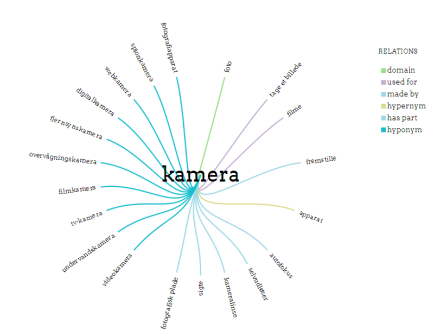linguistics
Using a Monitor Newspaper Corpus to Trace Changing Language as a Result of COVID-19
WordTies

WordTies is a web interface developed to visualize monolingual wordnets as well as their alignments with wordnets in other languages. Wordnets are a kind of lexical-semantic dictionaries where concepts are related to other concepts in language via semantic relations. In the WordTies browser, these semantic relations are made available in a more intuitive and graphical fashion compared to what is found in most other wordnet browsers. It is often difficult to apply wordnets across languages because they expose very different structures. Questions that one might want to ask are: What are the differences/similarities in the way wordnets are structured in the different European languages, and are these differences rooted in actual cultural differences? Or can they rather be explained by the use of different compilation strategies: monolingually based, based on corpora, based on lexica/term lists, cross-lingually based (via translations) etc. A flexible and intuitive way of comparing such resources is to connect them through WordTies.
To the extent where the relevant languages and domains are covered, WordTies can be used for addressing questions regarding cultural differences realized through language: How are educational systems expressed in wordnets in the different European languages? Are the divergences rooted in actual differences in the educational systems across countries? How are food taxonomies expressed in terminologies/wordnets in the different European languages? For example, are cheeses structured differently from a taxonomical view point depending on whether we in each particular country typically eat them as a starter, as a dessert or in a sandwich? Do we have comparable taxonomies for bread? Are these taxonomies changing over time due to more globalised eating habits? To illustrate, follow the example search below.
Example search
- Enter WordTies at https://wordties.nors.ku.dk/ and read the brief introduction regarding how each wordnet is developed
- Select the Danish wordnet, DanNet.
- Choose Multilingual alignments
- Look up 'brød' ('bread')
- Examine the subconcepts of 'bread' by considering its hyponyms (in the left column you can see the colour of this relation)
- Scroll down to see the definitions of each Danish hyponym.
- Click on alignment with Finnish
- Examine the bread hyponyms for Finnish
- Scroll down and read the definitions of the Finnish hyponyms (formulated in English)
- Consider to which extend the differences between the two languages are due to cultural differences or due to different strategies in building the wordnets.
The impact of the browser will be increased by extending it to include also languages outside the Nordic and Baltic area. Currently, the Polish wordnet has been integrated in WordTies.
WordTies was developed as a prototype in the META-NORD project (no. 270899) with the Nordic and Baltic countries. Task leader was Bolette Pedersen; developers were Mitchell Seaton and Anders Johannsen, University of Copenhagen.
WordTies currently includes Danish, Finnish, Estonian, Swedish and Polish wordnets. The following wordnet developers participated in the task of aligning and evaluating the Nordic and Baltic wordnets: Lars Borin,Markus Forsberg, Neeme Kahusk, Krister Lindén, Jyrki Niemi, Niklas Nisbeth, Lars Nygaard, Heili Orav, Eirikur Rögnvaldsson, Mitchell Seaton, Kadri Vider, and Kaarlo Voionmaa. The Polish wordnet was included under the leadership of Maciej Piasecki as a joint task between CLARIN-DK and CLARIN-PL.